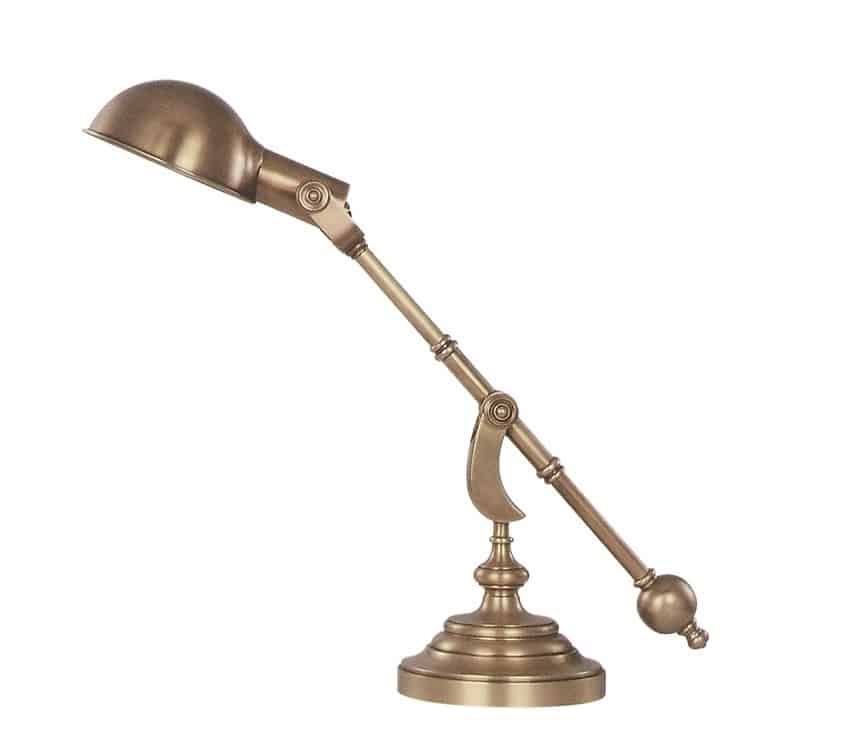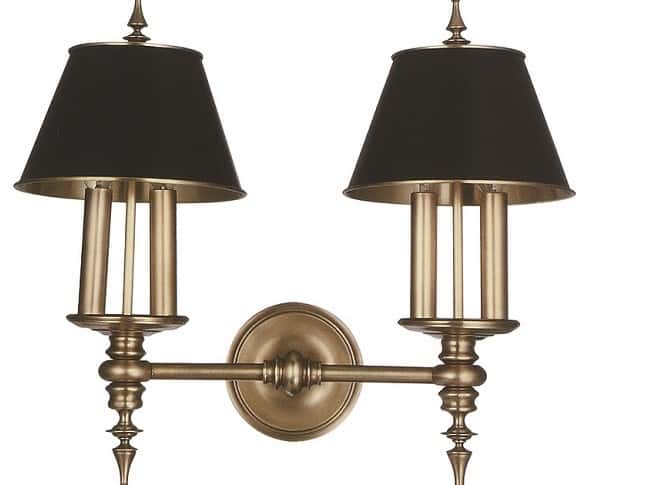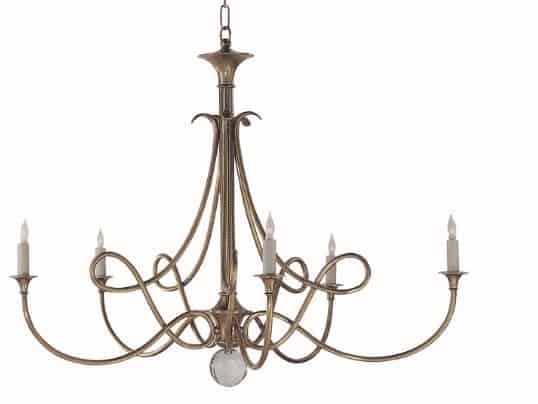Brass and Bronze are used a lot in the home decor and home furniture industry. But it can also be confusing as to the difference between brass and bronze materials. The two look very much the same and can both act the same for the end product.
Brass and bronze are both copper alloys, but brass is copper and zinc, and the bronze material is copper and tin. They both look similar but have different properties and uses. When brass or bronze is made into home decor products many times they will be sand cast or use a lost wax or investment mold technique. Each of these production methods has different uses and prices that can affect the overall production.
Table of Contents
- What is the Brass and Bronze Material?
- What is Sand Casting vs. lost Wax Casting of Brass or Bronze?
- Using Brass and Bronze in Home Decor and Home Furniture Development
- Related Questions:

What is the Brass and Bronze Material?
Bronze has been around since 3500 BC or leading up to the Bronze Age. People used bronze to create detailed sculptures, arrows, and other weapons. It was found to be stronger and more useful than stone and plain copper
Brass was introduced in 500 BC and is made from an alloy or a mixture of copper and zinc. How they mix the two and in what proportions form brass. Early on, people discovered if they melted copper and calamine (a zinc ore), it would yield a golden-colored metal that they could shape into a variety of objects.
Brass is similar to bronze, but bronze is an alloy of copper and tin instead of zinc. Brass and bronze are so similar that in many places they are used interchangeably. Many archaeologists may refer to both brass and bronze as copper alloys. This is because a copper alloy is defined as a metal that has copper as its main component.
Technical Differences in Brass and Bronze
As Brass and Bronze are used so interchangeably, it can be difficult for us to know what material has what properties. Here is a chart to show the properties of each to help you to be able to understand the differences:
| Brass | Bronze | |
| Composition | An alloy of copper and zinc | An alloy of primarily copper with usually some tin but also other additives. |
| Color | Muted Yellow, looks like gold but duller. | Reddish Brown Color |
| Varied Uses | Highly Malleability but has a low melting point (900 C) so it flows nicely when melted. By adding iron, aluminum, silicon, and manganese can make brass corrosion-resistant. Susceptible to stress cracking if exposed to ammonia. Not as hard as steel. | Hard and brittle. Melts at 950 C, but that can depend on how much tin is present. Bronze resists corrosion (especially seawater) and metal fatigue more than steel. This is why it is used as a heat and electricity source more than steel. |
| Properties | Decorative objects, plumbing fixtures, electronics, musical instruments, boats, and marine hardware | Hard and brittle. Melts at 950 C but that can depend on how much tin is present. Bronze resists corrosion (especially seawater) and metal fatigue more than steel. This is why it is used as a heat and electricity source more than steel. |
| History | First known to exist about 500 BC | Found to date back to 3500 BC |
What Does Hard or Soft Brass Mean?
Just like any other kind of material, brass can have a variety of qualities. These qualities are defined by the proportions used to actually make the copper and zinc.
Depending on how those two properties are mixed, the brass material can become either a hard or soft brass. Generally speaking, brass is a very hard material. It is a harder metal than just plain copper, but it is still not as hard or strong as steel.
What is Sand Casting vs. lost Wax Casting of Brass or Bronze?
When you are developing products out of brass or bronze, many times, you will hear suppliers talk about sand or lost wax casting for the part or product. Another term for lost wax casting is Investment casting.
Here are the differences between the two knows of casting:
Sand Casting
Sand casting is a technique that has been used for many years. But through the years, this process has been refined.
Some information on sand casting:
- Type of molten metals – usually iron, steel, bronze, brass, aluminum, magnesium or other non-ferrous alloys
- Mold – The mold is created by compacting sand. To make the sand mold, a metal mold is usually required. The sand is generally mixed with clay, which acts as a bonding agent. The area around the sand is then moistened with water for the mold to be made. Once hardened, the mold is split, and the pattern is removed.
- Pouring Metal – Once the mold has been made the two halves of the mold are put together, and liquid metal is poured into the top of the mold.
- Removed from Mold – Once cooled and hardened, the mold is opened, the sand is removed, and the part is removed.
- Casting Benefits – Several of the same parts can be cast at the same time many times.
- Easy to Make New Molds – Sand molds get destroyed in this process but new molds can be easily made.
- Recycled Sand – The sand is usually reclaimed and reused many times.
Lost Wax or Investment Casting
Lost wax casting is also called investment casting, and like sand casting, it is a technique that has been around for many years.
Some information on the lost wax or investment casting process:
- Type of molten metals – Molten metals are used as stainless-steel alloys, brass, aluminum, and carbon steel.
- Wax Molds – There are several ways a lost wax mold can be made. 1) A gelatin mold is formed around a solid 3D object or model. 2) Create a metal mold of the final product, then surround it with wax to make the mold, or 3) Carve a replica of the product out of wax for the mold.
- Can Make a Wax Tree to Cast Many at Once – For smaller items, a kind of wax tree can be used to cast several of the same things at one time.
- Molten poured – The molten is poured into the wax mold and then left to solidify and dissolve into the shape you require.

Comparisons Between Sand and Lost Wax (Investment) Casting
As the two techniques are very similar they are not exactly the same. Here are some differences between them:
| Lost Wax | Sand Casting | |
| Product Quantities Required | Low | High |
| Cost for Quantities | Medium | Lower |
| Mold Costs | Low | High |
| Surface Finish (out of the mold) | Very good | Fair to Good |
| Metals Types to Cast | Medium | High (has a lot) |
| Weight Limit of Casting | <700 lbs | <2,000 lbs |
| Ease To Cast Complex Designs | Excellent | Fair to Good |
| Ease to Change Designs | Fair | Excellent |
| Thinnest Wall Possible | 0.0625 | 0.1 |
Using Brass and Bronze in Home Decor and Home Furniture Development
Brass and bronze have long been a staple in home decor and home furniture industry and product development. Here are some of the major ways it is still used today:
- Furniture – All kinds of furniture use solid brass and bronze, from table legs to entire pieces of furniture.
- Furniture and other parts – A lot of furniture parts as handles, knobs, and hardware are made out of brass. As are parts and hardware for home decor.
- Lamps and lighting – A lot of lamps and lighting use brass and bronze parts and bases.
- Mirrors and wall art – Brass and bronze are also used for mirrors and wall art.
Brass and bronze are two materials that are here to stay for the home decor and home furniture industry. As they are products and materials that are so widely used, it is good for everyone to understand a bit more about brass and bronze and how they are processed.
Find out more about how Mondoro can help you create, develop, and manufacture excellent home decor and furniture products – don’t hesitate to contact me, Anita. Check out my email by clicking here or become a part of our community and join our newsletter by clicking here.
Mondoro gives out a FREE Lookbook to anyone interested. You can receive a copy of our latest Lookbook by clicking here.
Listen to our Podcast called Global Trade Gal. You can find it on all major podcast platforms. Try out listening to one of our podcasts by clicking here.
Subscribe to our Mondoro Company Limited YouTube Channel with great videos and information by clicking here.
Related Questions:
What Is The Difference Between Reclaimed and Recycled Wood Furniture?
Reclaimed and recycled wood may seem to be the same thing but they are not exactly the same. Recycled wood is wood that would have otherwise been discarded or not used. Wood is a naturally sustainable as material as it can be regrown and replaced. There are a variety of furniture shapes and styles that can be used to make recycled pine furniture.
You can read more about this on our blog Recycled Pine Furniture, What You Need to Know by clicking here.
What is The Rattan Material Used in Home Decor Products?
Rattan is best described as a climbing palm that will scramble through a forest and grow over all kinds of vegetation. Rattan is known to be a very good material to use for home decor furniture and accessories as it is natural, strong but can also take a variety of stains and paints. There are many steps that must be taken to properly process rattan. Vietnam has a long history of rattan and bamboo production.
You can find out more by reading our blog What is The Rattan Material Used in Home Decor Products? by clicking here.

